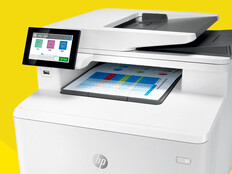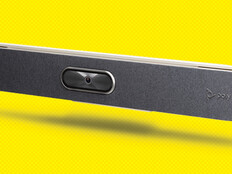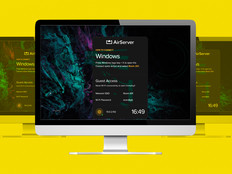How Harris County Public Library Is Building Digital Equity
When the pandemic shut down businesses and resulted in widespread layoffs, people relied on internet access to look for jobs, acquire new skills, register for vaccines and stay informed. Already, public workstations in libraries had become an important way for many to stay connected, but when libraries had to close for COVID-19 — many for as long as a year or more — they used pandemic relief funds to offer computing resources to the community.
“One of the first things we did was expand our Wi-Fi footprint, so it encompassed not just our branch locations, but also the parking lots in any parks and community centers that were adjacent,” LeMaster says. That way, people who had their own mobile devices but lacked access to a reliable internet connection could get online safely from outside their local library branch.
“The natural next step,” LeMaster adds, “was to offer laptops and wireless hotspots for checkout.”
In February, Harris County Public Libraries started HCPL Connected, funded by a $30 million grant from the Emergency Connectivity Fund. The HCPL Connected program comprises 40,000 Inseego 5G MiFi M2000 T-Mobile hotspots and will eventually include 15,000 Dell Chromebook 3100 2-in-1 convertible tablet notebooks. HCPL created a special, single-use library card for the program to limit the amount of information participants needed to reveal.
“We wanted to lower the threshold and widen the net of people who will feel comfortable checking out devices and taking advantage of the program,” LeMaster says, because ultimately, the No. 1 goal is to put the devices in the hands of people who need them. “Both the hotspots and Chromebooks will go out on lifetime checkouts. We’re not necessarily expecting to see them returned.”
The challenge for HCPL isn’t device management, it’s ensuring the devices remain useful. The program’s existing funding ends June 30, which means without new funding, the hotspots will cease working on T-Mobile’s network. The Chromebooks will continue to function provided the user has a Wi-Fi connection.
“In a perfect world, the FCC would extend the program,” LeMaster says. In the meantime, the library system is exploring other ways to ensure its hotspots stay connected.
EXPLORE: Logitech Combo Touch for remote and mobile devices.
Los Angeles Public Library Is Providing Mobile Devices Across Communities
The Los Angeles Public Library runs a similar program, Tech2Go, which offers hotspots and Chromebooks to adults who need them in underserved areas of the city. LAPL is rolling out 2,000 hotspot-Chromebook bundles, available for six months at a time.
“The feedback has been very positive,“ says Edwin Rodarte, senior librarian for emerging technologies and collections, who oversees the program. “We get emails from people who tell us they are between jobs, and the Tech2Go program is helping them figure out the next step in their careers.”
Like Harris County Public Library, LAPL used the Emergency Connectivity Fund to expand its program, which means it can’t charge the public for unreturned devices, Rodarte says. “It wasn’t our money to begin with, so they’re free to keep the devices.”
Still, LAPL uses a mobile device management system, including IBM Security MaaS360 and Google Admin, to locate certain devices and wipe them remotely if necessary. Before the pandemic, LAPL offered Apple iPad Minis for checkout, and nearly two-thirds were broken or lost. “We could tell one ended up in Guatemala,” Rodarte says.
The library doesn’t track usage data or perform any ongoing monitoring. It does, however, configure filters to comply with the Children’s Internet Protection Act. “Outside of that, the user has total control,” Rodarte says.












